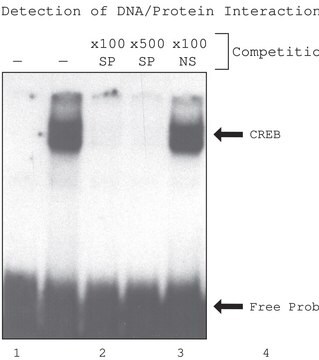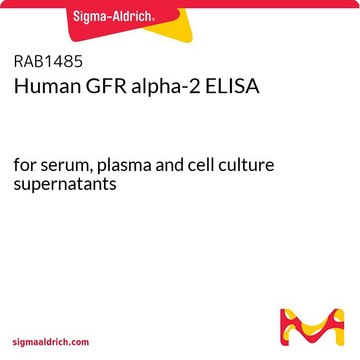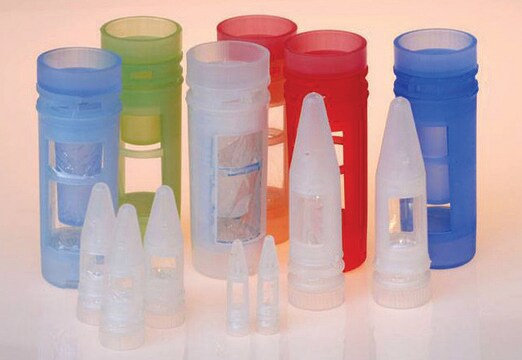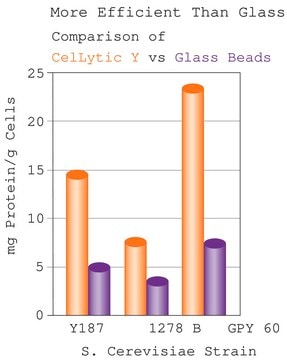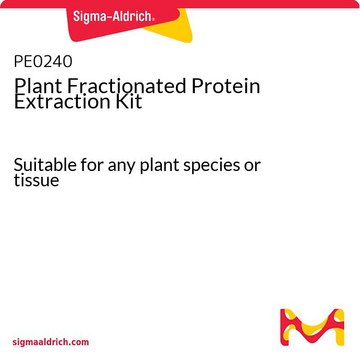PE0210
Plant Hydrophilic Protein Extraction Kit
Suitable for any plant species or tissue
Sign Into View Organizational & Contract Pricing
All Photos(1)
About This Item
UNSPSC Code:
41105500
NACRES:
NA.56
Recommended Products
storage temp.
−20°C
General description
The Plant Hydrophilic Protein Extraction Kit is designed specifically for use in plant bioscience to extract a qualitative sample of all hydrophilic proteins from any type of plant species or tissue. The kit includes two reagents, a plant specific protease inhibitor cocktail and a specially formulated reagent to extract hydrophilic proteins (Plant Protein Extraction Reagent Type 1). The protease inhibitor cocktail is a mixture of protease inhibitors with broad specificity for the inhibition of serine, cysteine, aspartic, metalloproteases, and aminopeptidases. It contains pepstatin A, E-64, leupeptin, 4-(2-aminoethyl)benzenesulfonyl fluoride (AEBSF), bestatin, and 1,10-phenanthroline. The cocktail has been demonstrated to be highly effective in preventing protein degradation during the extraction process.
Following removal of polyphenolics, tannins, and other interfering substances, ground plant tissue, fresh or frozen, is resuspended in the protein extraction reagent provided. Plant debris is pelleted by centrifugation and the hydrophilic protein extract is collected. The end result is a qualitative soluble hydrophilic protein sample, ready for downstream proteomic analysis.
Following removal of polyphenolics, tannins, and other interfering substances, ground plant tissue, fresh or frozen, is resuspended in the protein extraction reagent provided. Plant debris is pelleted by centrifugation and the hydrophilic protein extract is collected. The end result is a qualitative soluble hydrophilic protein sample, ready for downstream proteomic analysis.
Quantity
Sufficient for preparation of 20 separate extractions from plant tissue samples of 10-250 mg
Storage Class Code
10 - Combustible liquids
WGK
WGK 1
Flash Point(F)
185.0 °F
Flash Point(C)
85 °C
Choose from one of the most recent versions:
Certificates of Analysis (COA)
Lot/Batch Number
Sorry, we don't have COAs for this product available online at this time.
If you need assistance, please contact Customer Support.
Already Own This Product?
Find documentation for the products that you have recently purchased in the Document Library.
Siew-Yong Koay et al.
Journal of chromatography. B, Analytical technologies in the biomedical and life sciences, 879(22), 2179-2183 (2011-06-22)
Orthosiphon aristatus is a traditionally used medicinal plant. In order to study the proteome of the plant, we have developed a simple plant protein extraction method by direct extraction of protein using a modified 2D-gel compatible tris-sucrose buffer followed by
Angus L Dawe et al.
Methods in molecular biology (Clifton, N.J.), 722, 225-236 (2011-05-19)
The interaction of the filamentous fungal plant pathogen Cryphonectria parasitica with its virulence-attenuating viruses provides a unique platform to explore the molecular biology and genetics of virus-host interactions. Following the development of transformation procedures for this fungus, subsequent advances include
M Cilia et al.
Journal of biomolecular techniques : JBT, 20(4), 201-215 (2009-09-02)
Protein extraction methods can vary widely in reproducibility and in representation of the total proteome, yet there are limited data comparing protein isolation methods. The methodical comparison of protein isolation methods is the first critical step for proteomic studies. To
Ramesh Sundar Amalraj et al.
Electrophoresis, 31(12), 1959-1974 (2010-06-22)
Sugarcane is an important commercial crop cultivated for its stalks and sugar is a prized commodity essential in human nutrition. Proteomics of sugarcane is in its infancy, especially when dealing with the stalk tissues, where there is no study to
Yassel Ramos et al.
Analytical biochemistry, 377(2), 134-140 (2008-04-04)
We investigate the selectivity achieved after differential solubilization of bacterial proteomes following two procedures, both based on successive extraction of proteins in solutions of increasing solubilizing power. Recently, these procedures have gained notable popularity and several commercial kits are now
Our team of scientists has experience in all areas of research including Life Science, Material Science, Chemical Synthesis, Chromatography, Analytical and many others.
Contact Technical Service